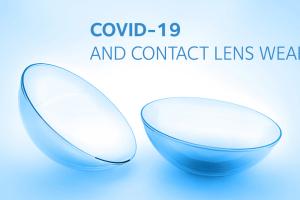
Fitting new patients with contact lenses provides an invaluable opportunity for eye care professionals (ECPs) to deliver a memorable experience that can strengthen the ECP-patient relationship for many years to come. This article shares some tips to help improve patient experience in three key areas of a new contact lens fit: the counselling, the fitting, and the follow up.
The counseling
A patient new to contact lenses may hold some initial concerns about their suitability for lenses, how the lenses will feel once placed on the eye, and the overall effect on ocular health,. The ECP can help by addressing these concerns upfront, through making a clear professional recommendation, answering any questions, and, where possible, offering a lens-on-eye experience straight away.
ECPs should inform patients that the contact lens recommendation is tailored to each person, based on a number of considerations including the patient’s lifestyle, intended use, prescription and anterior eye status. Problems with vision were cited as the most common reason for new wearer drop out (41%), closely followed by discomfort (36%) in a study that followed the outcomes of new contact lens fits over the first year.1 This insight is worth bearing in mind when advising patients on their visual correction. This means toric lenses, even for low astigmats of 0.75D should be recommended, along with multifocal lenses for presbyopes. Likewise, discomfort remains an issue in contact lens drop out2 and also for new wearers,1 so ensuring the lens material and modality recommended are going to help maximise comfort is important, along with paying attention to, and managing any deficiencies in, the quality of the ocular surface and tear film.
The fitting
Some top tips for fitting new wearers are outlined below. Overall, the experience should be focussed on being as positive as possible; delighting the patient and giving them the motivation to want to continue with contact lens wear.
- It can be very useful to offer a contact lens experience on the same day. This overcomes the initial barriers and concerns a patient may hold about how the lens will feel on their eye.
- Where possible, it can be helpful to split the first visit into two sessions on the same day. The ECP can apply the contact lens for the patient in the morning, assess the fit on the slit lamp and let the patient go back to their normal daily routine. In the afternoon, the patient returns to report on their wearing experience after a few hours of wear. This type of split appointment is especially helpful for young lens wearers, serving to allay the concerns of both the child and the parent over how well contact lenses may be tolerated.
- Wear and care training is essential, not only for promoting safe use of lenses, but for achieving continued success. Difficulties with handling were reported by one quarter of new contact lens wearers who dropped out within the first twelve months.1 This makes thorough training crucial. Supplying supporting materials for the patient to use at home is beneficial, and reviewing this training at the early follow-up visits helps to mitigate initial difficulties and incorrect techniques. One tip for those intending to wear lenses part time is to ask the patient to practice on a daily basis for the first couple of weeks. Once confident with application and removal techniques the patient can return to part time wear as planned.
- It is ideal to be able to offer application and removal training on the same day, allowing the patient to leave with their new contact lenses. Should this not be possible, the time in between sessions can be used by providing links to online resources such as training videos for insertion and removal. This helps to create a smoother, time efficient experience when the patient returns for their teaching session.
The follow up
Follow up is extremely important because a high proportion of new contact lens fits stop soon after being fitted. Of those that dropped out in a prospective study of new fits, 70% had done so by six months, with one in five ceasing wear within the first three weeks.1 Bearing this in mind, it makes good sense to have a member of staff call the patient after a few days. This helps to elicit any early problems they may be experiencing, enabling them to be addressed before the patient loses motivation.
Scheduling an in-office follow up 1-4 weeks after the initial fit provides an opportunity to reassess comfort, vision, handling and overall satisfaction with contact lenses. Given that the ECP was unaware of drop out for over half (57%) of the patients who stopped wearing lenses during their first year,1 these early follow-up check-ins on how well the lenses are performing are crucial to uncover any issues and help address them. A follow-up phone call a couple of days after the fitting to ensure all is well is highly recommended.
By combining the discussions of patients’ visual needs, an easy and comfortable initial fitting visit, and appropriate follow ups, you will provide your patient with an enjoyable new fit experience. Seeing a patient excited about CL wear will also be rewarding for you and your practice. Plus, this will help increase the frequency of recommendations or referrals from satisfied new wearers to your practice.
References
1 Sulley A, Young G, Hunt C, McCready S, Targett MT, Craven R. Retention Rates in New Contact Lens Wearers. Eye Contact Lens 2018;44 Suppl 1:S273-S282.








